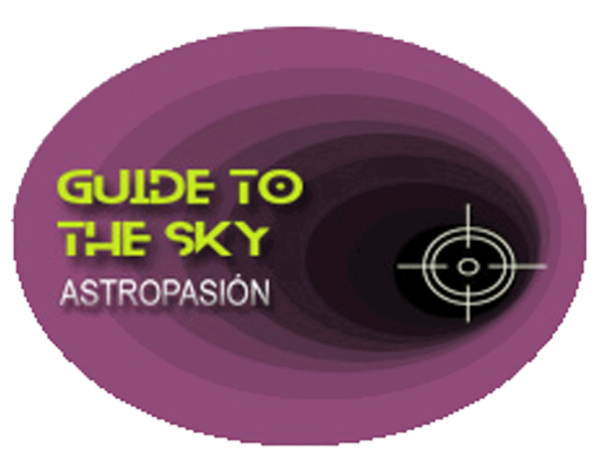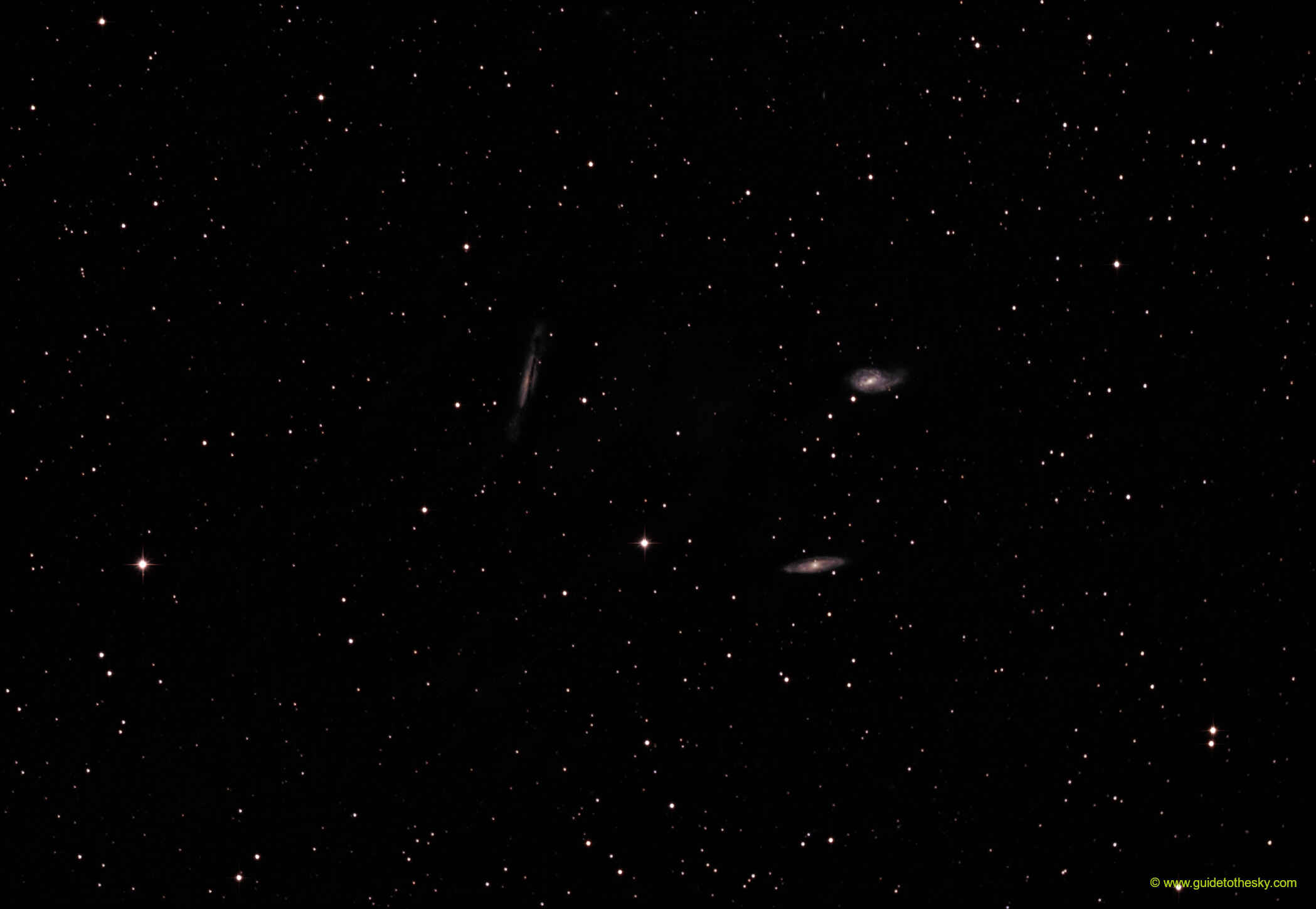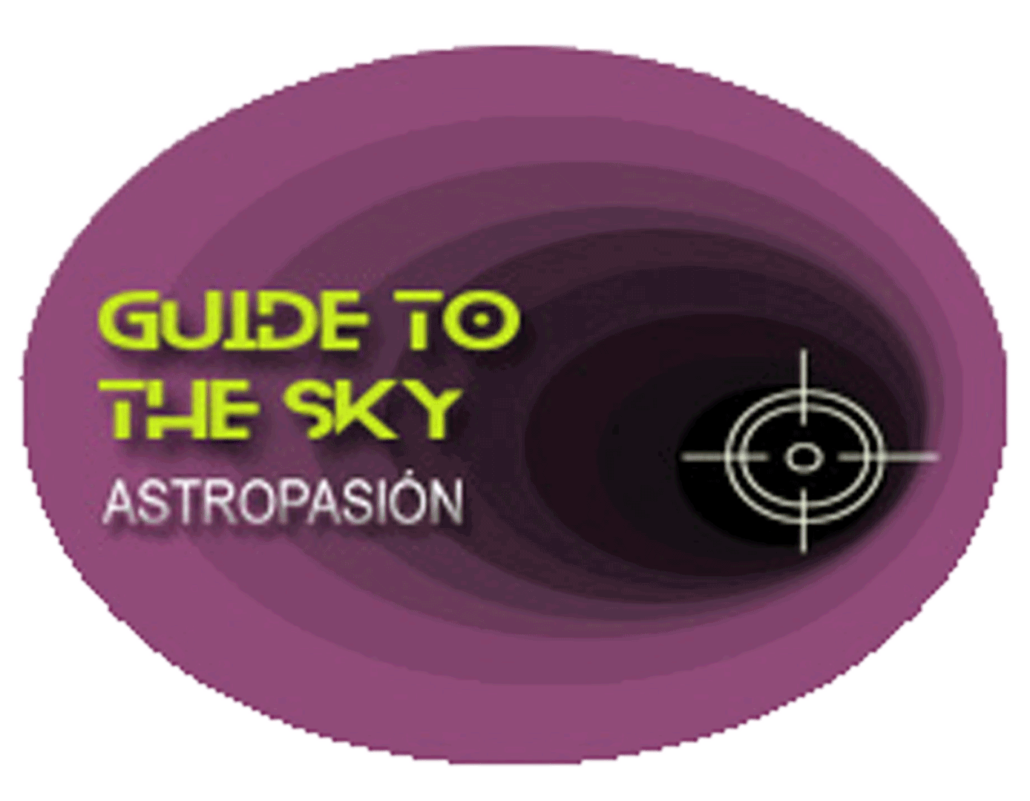Messier 66 - Leo
It is part of the so-called Leo Triplet along with NGC 3628 and NGC 3623. The one we are dealing with, M66, is the brightest of the 3, with a visual magnitude of {{ object[0].M66.visualMagnitude }} and a size of {{ object[0].M66.angularN }}x{{ object[0].M66.angularM}} arc minutes.
M 66 is {{ object[0].M66.mesDistances[0].dist }} {{ object[0].M66.mesDistances[0].unit }} away, and is a SAB(s)b kind Galaxy wich indicates something between barred and not barred shape, lacking inner ring, with intermediate rolled up arms.
The Leo triplet is interesting because it shows us three galaxies from different viewing angles: while M66 is shown almost face-on, NGC 3628 is shown almost edge-on, while NGC 3623 is another spiral that is shown to us at an oblique angle, similar to that of M 31.
M66 - M66 del triplete de Leo - en la IA
Messier 66 (M66) is a beautiful and well-known spiral galaxy located in the constellation Leo. Here's a breakdown of what makes it so interesting:
Key Features and Facts:
- Type: Spiral Galaxy
- Constellation: Leo
- Distance: Approximately 36 million light-years from Earth
- Diameter: Roughly 95,000 light-years
- Mass: Estimated to be hundreds of billions times the mass of the Sun.
- Magnitude: 8.9
- Part of the Leo Triplet: M66 is a member of a prominent group of galaxies called the Leo Triplet (also known as the M66 Group), which also includes M65 and NGC 3628 (the Hamburger Galaxy). These three galaxies are gravitationally interacting, leading to distorted shapes and tidal tails.
- Discovery: Discovered by Charles Messier in 1780.
Why it's interesting:
- Striking Spiral Structure: M66 exhibits a well-defined spiral structure with prominent, asymmetrical spiral arms. These arms are rich in star formation regions, evident as bright blue patches in images.
- Tidal Interactions: The gravitational interactions within the Leo Triplet have warped M66's shape. One of its spiral arms is extended and distorted, likely due to tidal forces from its neighbors.
- Active Star Formation: As mentioned above, M66 is a site of intense star formation, making it a valuable target for studying the processes that trigger and sustain the birth of new stars.
- Supernovae: M66 has hosted several observed supernovae over the years, providing opportunities for astronomers to study the lifecycle of massive stars and the chemical enrichment of galaxies. Supernovae observed include: SN 1973R, SN 1989B, SN 1997bs, and SN 2009hd.
- Popular Target for Amateur Astronomers: M66 is bright enough to be observed with moderate-sized telescopes, making it a favorite object for amateur astronomers and astrophotographers.
Observing M66:
- Best Time to View: Spring (around March-May) when Leo is high in the night sky.
- Equipment: A telescope of at least 4-6 inches aperture is recommended to see M66. Larger telescopes will reveal more detail in the spiral arms and star-forming regions.
- Location: A dark sky location away from light pollution is essential for optimal viewing.
In summary, Messier 66 is a fascinating spiral galaxy showcasing the beauty and complexity of galactic interactions and star formation processes. Its location within the Leo Triplet makes it a compelling object for both scientific study and astronomical observation.
Más información sobre Messier 66 en NASA/IPAC.
Mapa alrededor de Messier 66
Otros identificadores de M66:
"[DC78] UGC 6346" ,"NAIC 1117+133" ,"GLEAM J112015+125926" ,"AAVSO 1115+13B" ,"ADBS J112020+1259" ,"APG 16" ,"APG 317A" ,"Ark 288" ,"IRAS F11176+1315" ,"IRAS 11176+1315" ,"LEDA 34695" ,"M 66" ,"MCG+02-29-019" ,"MITG J1120+1259" ,"MRC 1117+132" ,"NGC 3627" ,"TC 162" ,"UGC 6346" ,"VV 308" ,"VV 308a" ,"Z 67-57" ,"[LBH86] 1117+132" ,"2MASX J11201502+1259286" ,"1RXS J112016.7+125917" ,"CAIRNS J112015.02+125929.5" ,"RGB J1120.3+1259" ,"RX J1120.2+1259" ,"RX J1120.3+1259" ,"UZC J112015.1+125928" ,"Z 1117.6+1316" ,"[CHM2007] HDC 626 J112015.02+1259286","[CHM2007] LDC 778 J112015.02+1259286","[M98c] 111737.9+131608" ,"[VV2000c] J112014.9+125927" ,"[VV2003c] J112014.9+125927" ,"[VV2006c] J112014.9+125927" ,"[VV98c] J112014.9+125927" ,"[ZEH2003] RX J1120.2+1259 1" ,"[RS2000] 157" ,"PSCz Q11176+1315" ,"HIPASS J1120+13a" ,"[VV2010c] J112014.9+125927" ,"SDSS J112014.98+125929.4" ,"WB 1117+1316" ,"NVSS J112015+125902" ,"Cul 1117+132" ,"GB6 B1117+1315" ,"MITG J112015+1259" ,"JCMTSE J112014.8+125932" ,"87GB 111738.3+131603" ,"JCMTSF J112014.8+125932" ,"BWE 1117+1316" ,"RGB J1120+129" ,"[CAB95] IRAS F11176+1315" ,"[NKB95] N3627" ,"NAICGB 1117+132" ,


